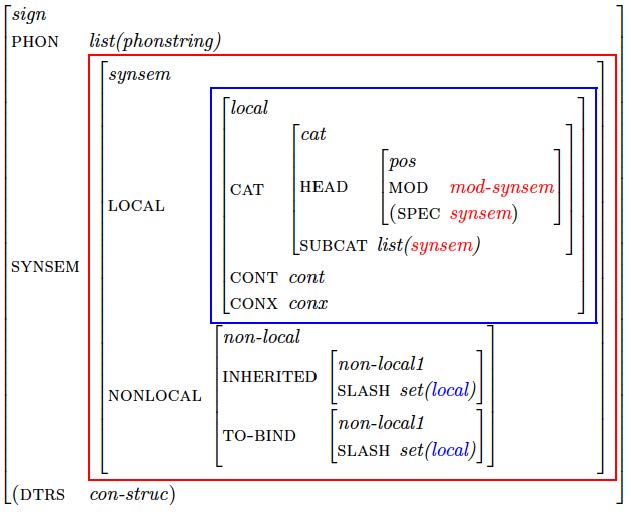User:Gert: Difference between revisions
| Line 10: | Line 10: | ||
=== Parts of Speech === | === Parts of Speech === | ||
Every English word belongs to a '''part of speech''' like ''noun'', ''verb'', or ''adjective'', and many words belong to more than one (for instance, the word cook can be a noun or a verb). You can think of a part of speech as a set of words that share some grammatical property, e.g. nouns often refer to objects and can be singular or plural, verbs often refer to event and can appear with different tense affixes, etc. | |||
Thus, for every part of speech, there are a number of tests that one can use to check whether a given word belongs to that part of speech. While there are certain cases where the tests to not give a clear result on the part of speech of a word, the typical situation is one where the tests unambiguously favor one part of speech over the others. | |||
In the following sections, we present the tests for each part of speech. | |||
===The Noun=== | ===The Noun=== | ||
Revision as of 15:30, 9 April 2017
Syntax 1 Wiki
Words
Syntax deals with the question of how the phrases of a language are built up from smaller phrases and words.
Parts of Speech
Every English word belongs to a part of speech like noun, verb, or adjective, and many words belong to more than one (for instance, the word cook can be a noun or a verb). You can think of a part of speech as a set of words that share some grammatical property, e.g. nouns often refer to objects and can be singular or plural, verbs often refer to event and can appear with different tense affixes, etc.
Thus, for every part of speech, there are a number of tests that one can use to check whether a given word belongs to that part of speech. While there are certain cases where the tests to not give a clear result on the part of speech of a word, the typical situation is one where the tests unambiguously favor one part of speech over the others.
In the following sections, we present the tests for each part of speech.
The Noun
Tests to identify nouns
- semantic test:
- Nouns name persons, things or places
- morphological test:
- Nouns can combine with a plural morpheme (-(e)s)
- syntactic test
- Nouns can occur with the possessive 's, i.e. in the environment:
- __ 's
- Nouns can occur between a determiner and a verb, i.e. in the environment: Det __ V
Semantic analysis of sentences into predicates and arguments
Note: Many of the sentences in this section are taken from or based on examples in Hornby, A.S. (1975) Guide to Patterns and Usage in English. Second Edition. Cornelsen & Oxford University Press.
Establishing the head of a phrase
Establish what phrase the words below form and identify the head of the phrase!
Valence
2. Kim needs new shoes. 3. Kim talked to the student. 4. Kim sent the student to Robin. 5. Kim lent Robin a bicycle. 6. Kim told Robin that the student likes her. 7. Kim suggested to Robin that the student likes her. 8. Kim wants [to eat an apple.] 9. Kim believes Robin to like the student. 10. Kim seems to like the student. 11. Kim is intelligent. 12. Kim found the movie interesting. 13. Kim talked to Robin about the student. 14. Kim saw Robin talk to the student. 15. The student amuses Kim. 16. Kim came out of the room.
Words
| Verb | SUBJ | COMPS |
|---|---|---|
| snore | <NP> | <> |
| own | <NP> | <NP> |
| put | <NP> | <NP,NP> |
Verb SUBJ COMPS
snore <NP> <> own <NP> <NP> put <NP> <NP,PP>
When you look up the word scissors in the Oxford Learner's Dictionary, you are given the following information about it:
| Phonology | scissors |
| Part of speech | noun |
| Number | plural |
| Content | a tool for cutting paper ... |
The following representation shows how we will structure the information in a word in this course:
http://www.ello.uos.de/field.php/Syntax/Syntax
A video on the concept grammar
<iframe width="420" height="315"
src="https://www.youtube.com/embed/JRiX8Jiq_Z4">
</iframe>
